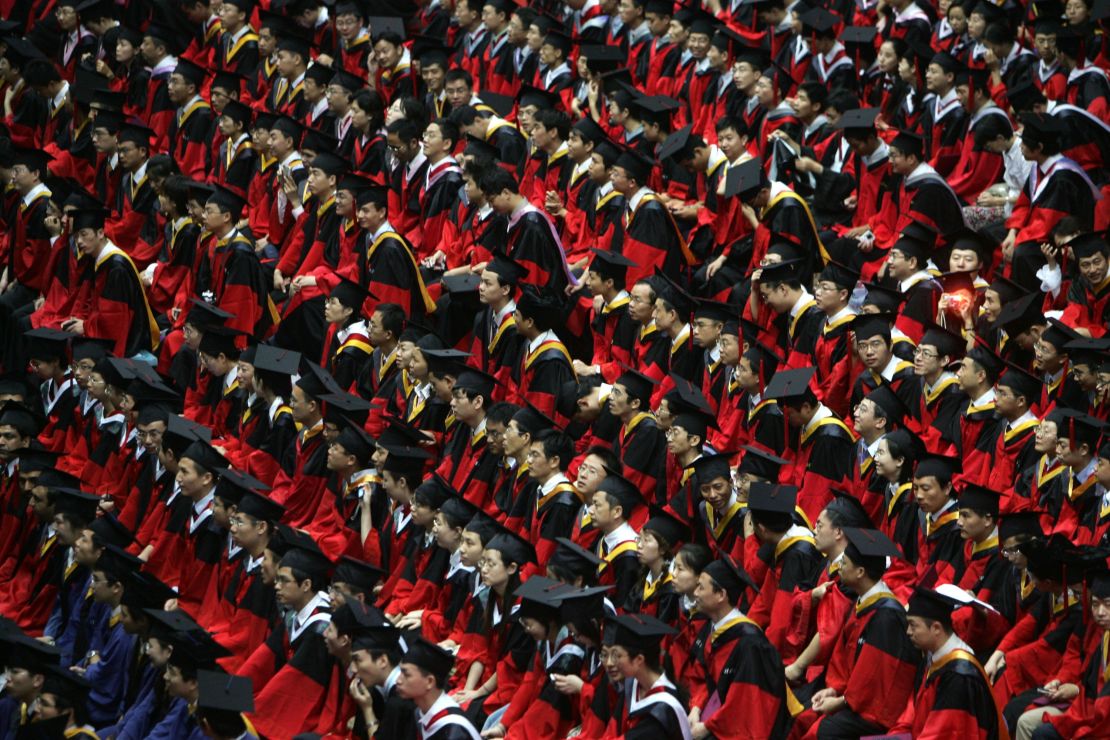Chinese universities are leading Asia’s rise in global university rankings, though the top 10 list is dominated by leading institutions in the United Kingdom and United States.
British universities Oxford and Cambridge remain at number one and two respectively in the Times Higher Education World University Rankings, with US institutions dominating the top 100 places in the list.
Stanford maintained its position as the highest ranked US institution in 3rd place, alongside Massachusetts Institute of Technology (MIT) at 4th, and California Institute of Technology at 5th.
However, Japan has overtaken the UK as the second most represented nation in the table with 103 universities, up from 89, as the UK shows signs of “stagnation and modest decline.”
China is leading the eastern hemisphere’s surge with one its universities becoming the top institution in Asia for the first time in the rankings of the best 1,250 research universities around the world.
See where your university is ranked
Singapore no longer top in Asia
Tsinghua University in Beijing has overtaken the National University of Singapore as the top institution in Asia, after rising eight places to 22nd, representing the greatest rise in the top 30. NUS dropped from joint 22nd to 23rd, according to the Times Higher Education (THE) website.
“Tsinghua’s rise was driven largely by improvements to its teaching environment, in particular increases in institutional income and the share of PhD degrees awarded,” said THE.
Simon Marginson, professor of higher education at the University of Oxford, was quoted as saying that he was “not surprised” by Tsinghua’s advance.
“It’s easily the number one university in the world for high citation research in mathematics and computing – a combined field in which China has now moved well ahead of the US and, further back, Europe. It is near the top of the world, and rising fast, in physical sciences and engineering,” he said, according to THE.
The university could also give most western higher education institutions a run for their money in terms of post graduate application costs, charging modest tuition fees of RMB 30,000 ($4,360) per year and RMB 40 to 80 per day ($4 to $12) for lodging in a single room.
Earlier this year, Elsevier’s Scopus database of scholarly research found that China’s rapidly improving performance might see it match the US by the mid-2020s.
Another rising Chinese star is Zhejiang University, in the country’s south, which climbed 76 places to 101st.
The five metrics underpinning the rankings are teaching, research income, research volume, industry income, proportion of international students and proportion of international staff.
Overall, 72 Chinese universities make the 2019 ranking, up from 63 last year.
THE said the University of Hong Kong remains “the region’s flagship,” moving up four places to 36th.

India fails to make top 200
Elsewhere in Asia, South Korea’s front-runner – Seoul National University – has also climbed up the table, claiming 63rd place this year, up from joint 74th.
However, India continued to trail in the rankings, failing to make it to the top 200 list.
The Indian Institute of Science continued to lead the national field, coming in In the 251-300 global band.
Overall, India increased its presence, with 49 institutes being ranked, against 42 last year, making India the fifth-best represented nation in the world, but THE said a majority of institutions stagnated or lost ground.
Germany gets a boost
In Europe, Germany performed strongly, with eight institutions in the top 100, including top placed LMU Munich, ranked 32nd.
The University of Hamburg climbed from the 201-250 band to joint 135th.
“The reform of our university’s structures and processes – as yet work in progress – forms the basis for the optimization of our performance,” Hamburg’s president, Dieter Lenzen was quoted as saying by THE.
“As a result, the University of Hamburg has emerged as the flagship university in northern Germany.”
France registered just two institutions in the top 100, with Paris Sciences et Lettres (PSL) at 41st, and Sorbonne University at 73rd, compared to the Netherlands, which claimed seven places, including Delft University of Technology at 58th, Wageningen University at 59th and University of Amsterdam at 62nd.
Belgium’s KU Leuven held its position as the country’s only institution to rank in the top 100, placing 48th.

Australia ‘stagnating’
While Anglo-Saxon universities dominate the top of the ranking, Australian universities are “stagnating” due to budget cuts, THE said.
THE noted that six out of nine Australian universities in the top 200 lost ground compared with their positions in 2018.
“While there are some examples of progress from Australia this year, the national picture is a cause for concern, with many universities declining or remaining stagnant,” said Ellie Bothwell, THE’s global ranking’s editor.
“As funding cuts take hold and pressure mounts to cap international student numbers — combined with intensifying competition from Asia — Australia’s universities could well face an uphill struggle in the coming years.”
In total, six Australian institutions feature in the top 100, with the University of Melbourne coming top at 32nd, followed by Australian National University at 49th and University of Sydney at 59th.
Baghdad makes list
On a positive note, Iraq’s biggest institution, Baghdad University, made the rankings for the first time, coming in the 801 and 1000 band, scoring well on international outlook.
The United Arab Emirates also scored well when viewed through the prism of “international outlook,” which is determined by data on the level of international staff, students and cross-border research at each institution.
Small countries, such as the UAE, that are important global hubs similar to Singapore and Switzerland “naturally have the best scores, with Hong Kong taking a noticeable leap forward in recent years,” THE said.
